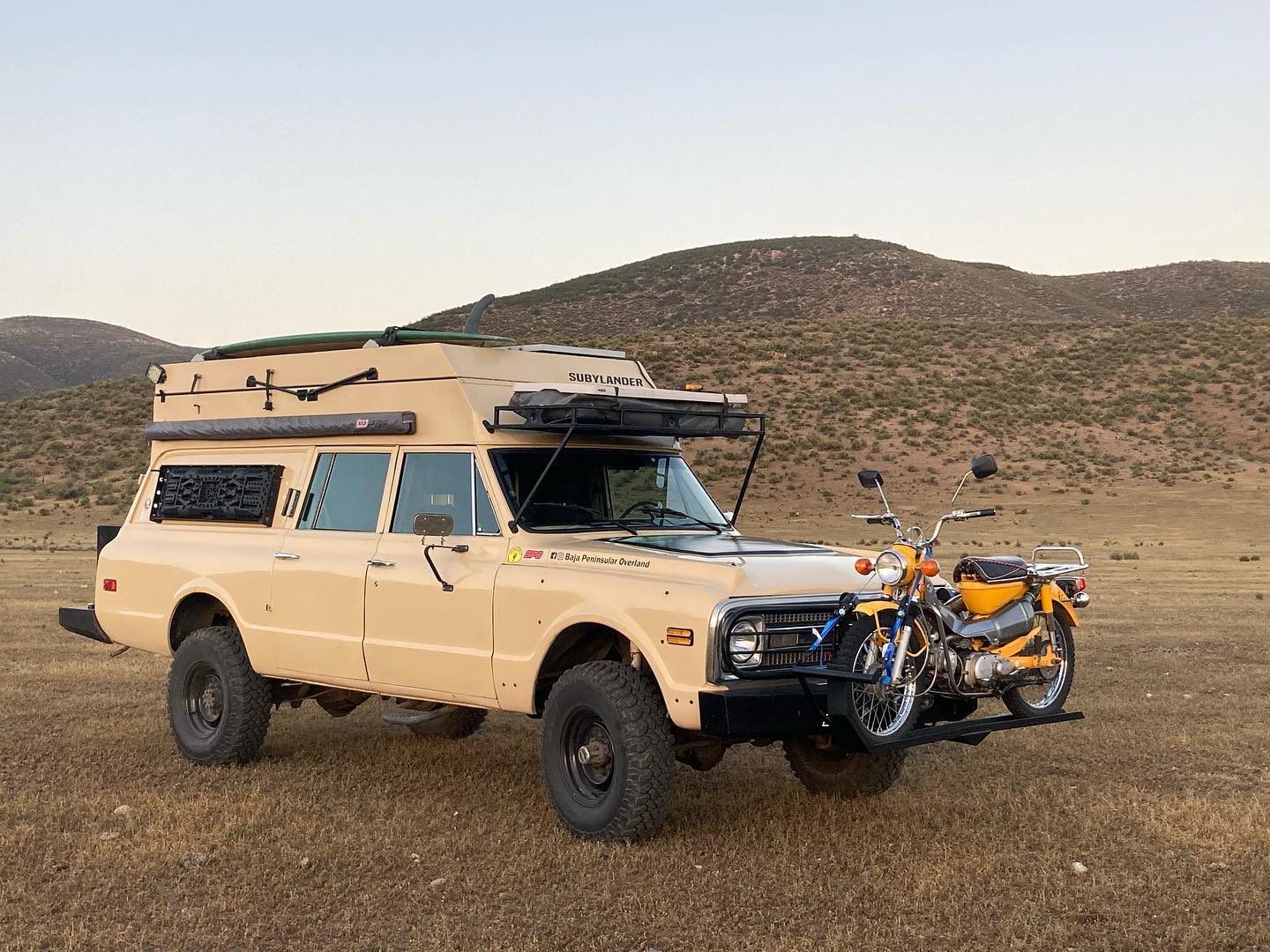In the dynamic world of overlanding, the emergence of tools like iOverlander has brought a significant shift. No more driving around at night at ridiculous hours trying to find a place to stay; open the app, find a spot, and voilà, you’re sorted. This app has become a beacon for the modern traveler, right or wrong, and it was through this very app that we came across a unique couple, a wonderful slice of Baja, and a vehicle with a story to tell: the unique 1969 Chevy “SubyLander” Suburban camper.
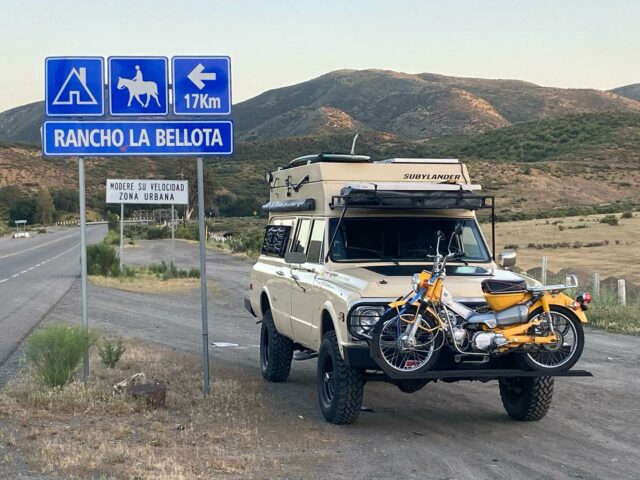
Nestled in Baja California is Baja Rancho La Bellota, a ranch that has become a renowned stopover in the overlanding community. This is where Raul, a generational rancher from Baja, and Caroline, originally from the United States, have been hosting travelers long before overlanding became a fashionable term. Their ranch is more than just a waypoint; it’s a hub and a refuge, a place highly recommended by veteran overlanders and run by veteran overlanders, as is the hallmark of all great overland camps.

The 1969 Chevy Suburban is affectionately dubbed “SubyLander” or “Suby.” Sure, there are many amazing modern overland vehicles to feature, but there is just something about a hand-built, 53-year-old camper that fills us with respect and reminds us of an era long gone. This truck is the definition of solid; it has a great story and is driven by people just as solid. The old Chevy’s story begins with Raul, who had been road-tripping with his parents in a 1966 Suburban since he was young. In 1992, Raul seized the opportunity to purchase the 1969 Chevy Suburban for $900. This purchase marked the beginning of an overland journey that spanned across Canada, the United States, and Mexico, with a particular affection for every nook and cranny of Baja. The moderately upgraded SubyLander became a family member, synonymous with adventure and exploration, much loved by the couple’s children.

However, as time passed, the SubyLander’s journeys became less frequent, and the old vehicle became dated by modern standards. The vehicle eventually found itself relegated to the duties of a workhorse on the ranch and eventually found itself parked behind a chicken coop for a lonely decade. Due to Baja’s dry heat, the vehicle passed these years without too much degradation and very little rust.
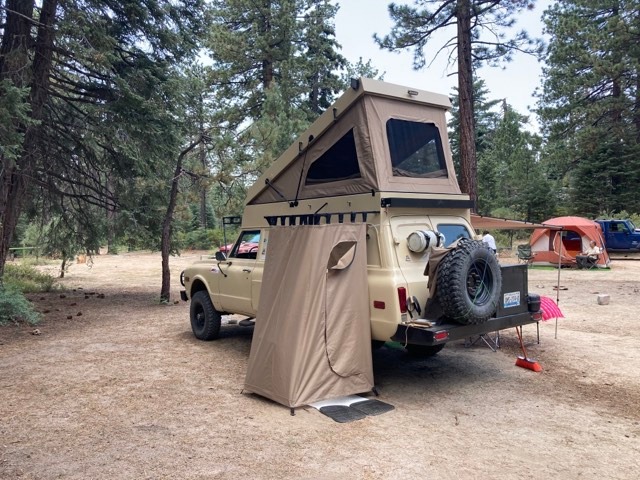
During this hiatus, Raul and Caroline shifted their adventures to a 1994 Toyota Hilux, which they transformed into a basic camper. But the Hilux had inherent limitations. Eventually, nearly all long-term overlanders realized the intrinsic value of a “live-in” vehicle, as rooftop tents and ground tents are generally sufficient for short journeys but less desirable for multi-continent travel. With a dream overland trip to Patagonia on their minds, the couple decided to look at the old Chevy covered in dust and chicken feathers and use what they had. A plan was hatched to breathe new life into the SubyLander as a mobile home capable of accommodating their changing needs. A deciding factor for the vehicle’s transformation for long-distance travel was the availability of parts for the old American vehicle, coupled with its mechanical simplicity—a crucial factor for repairs in remote locations across the Americas. The couple knew they needed a vehicle that could offer the comforts of indoor living: a place to cook, sleep, and relish the outdoors without traditional outdoor camping constraints. One of the great advantages of the old Chevy is that the interior is cavernous, especially when compared to modern vehicles, and offers more than enough space for comfortable living and travel.





The revitalization of the SubyLander was not merely a repair job, it was a labor of love. The renovation process was extensive, taking two and a half years and costing about $60,000, including labor and materials. Yes, the renovation could have been done for a third of the cost had they not insisted on creating an utterly reliable vehicle that was nearly perfect mechanically. And, this was no spit and polish, give a new lick of paint and bolt a few bits on restoration job; the vehicle was completely stripped and rebuilt from the ground up. Every nut, bolt, clip, screw, hinge, seal, and moving part has been replaced or restored. The proximity of the couple’s rancho in Baja to the vast American car parts market also worked in the couple’s favor, as they could source parts at a fraction of the cost of those same parts in Mexico.
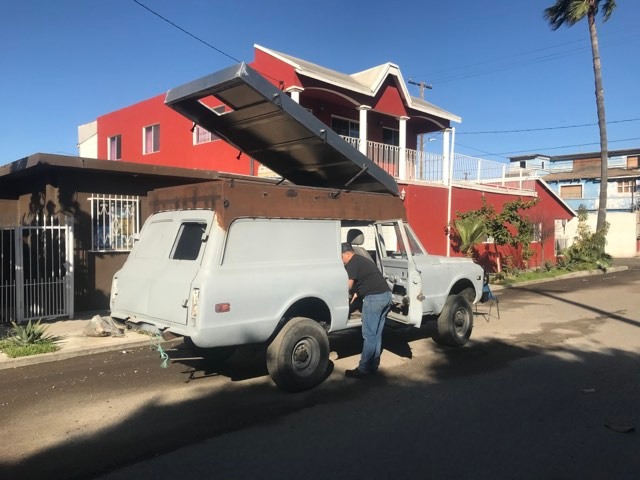
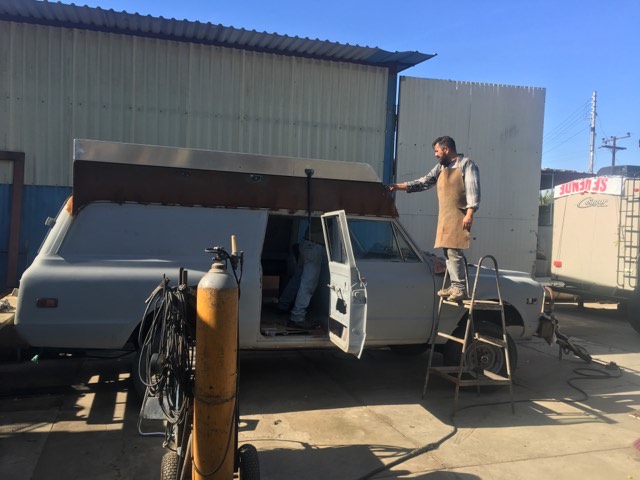

This overhaul saw a new 350 engine installation from a Chevy dealer in San Diego (fuel economy is shocking at 12mpg (on a good day); a Cummins diesel may have been a more practical choice, ignoring installation complexities), a modified racing transmission, heavy-duty axles, and a rebuilt transfer case. The entire interior underwent a complete transformation, focusing on durability and functionality. One of the standout features is the pop-top roof, inspired by the Land Cruiser Troopy (specifically, the roof reminds us of the vehicles from Tom’s Land Cruisers, made in rural Germany), providing additional space and comfort. This is possibly the only Chevy Suburban with a pop-top; at least, we have never seen another!

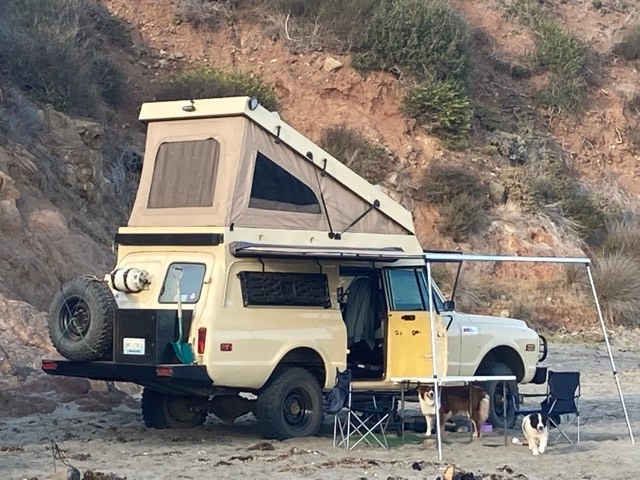
As anyone who has spent a fair amount of time in northern Baja will tell you, there are more than a few workshops based in Ensenada owned and staffed by old-school tradesmen who have the technical ability to transform dreams into a reality affordably. These workshops and fabricators were to be a great asset in the build process. The resurrection of the SubyLander was a collaborative effort involving a fabricator, a body shop specialist, an electrician, a carpenter, and a mechanic. Raul spearheaded the design, transforming his visions into tangible modifications.
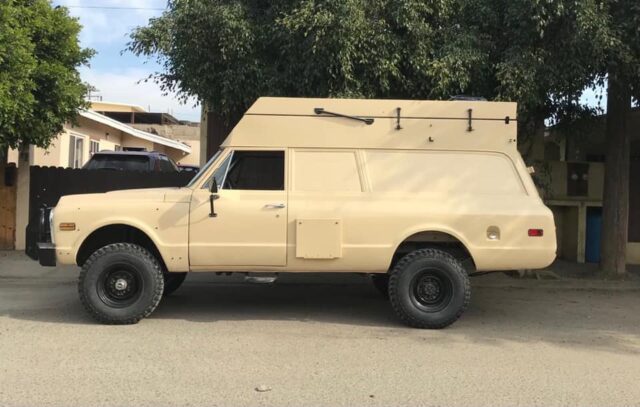

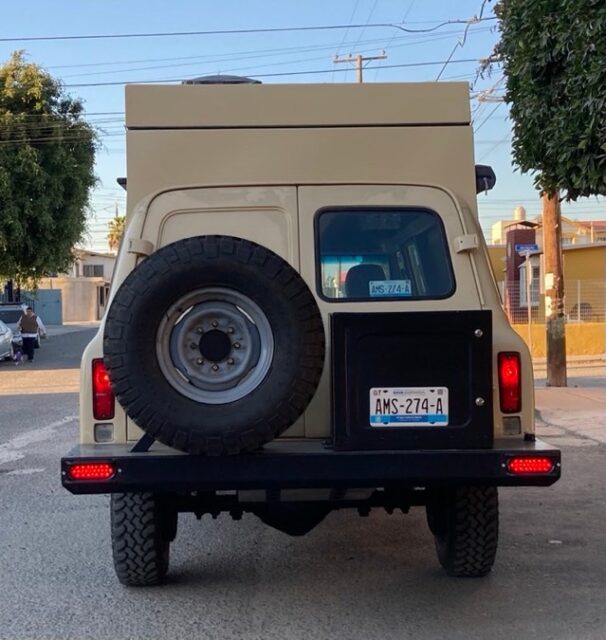
To cater to their love for biking and the practical necessity of a two-wheel runabout, a front bike rack was added, crafted by Alan at Barajas Fab and Prep in Tijuana, allowing them to bring along their Honda Trail 90. An innovative roof rack extends across the windscreen and the rear portion of the hood, allowing for the transportation of light, bulky camping gear, a table, and firewood while providing a slice of welcome shade for the couple when driving. The pop-top roof includes an elevated extension across the entire vehicle length, resulting in a standing room at the rear and an interior storage compartment above the front seats. The pop-top roof is home to a bank of solar panels and a surfboard, while the back of the camper houses a spare tire, a propane tank, and a large storage box for essentials. A simple side awning provides shelter when camping, which is essential in sunny Baja.
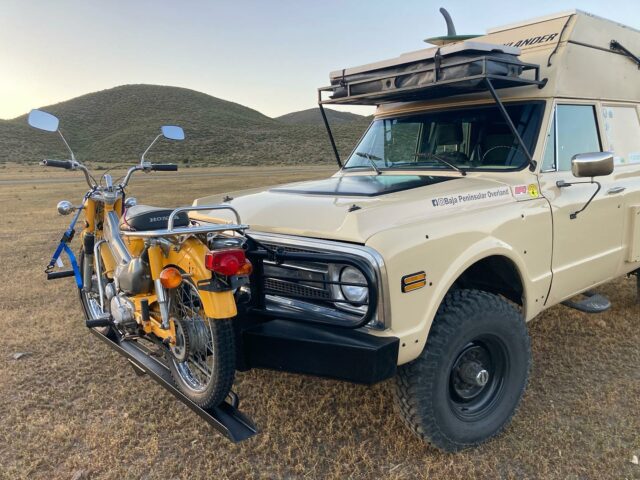
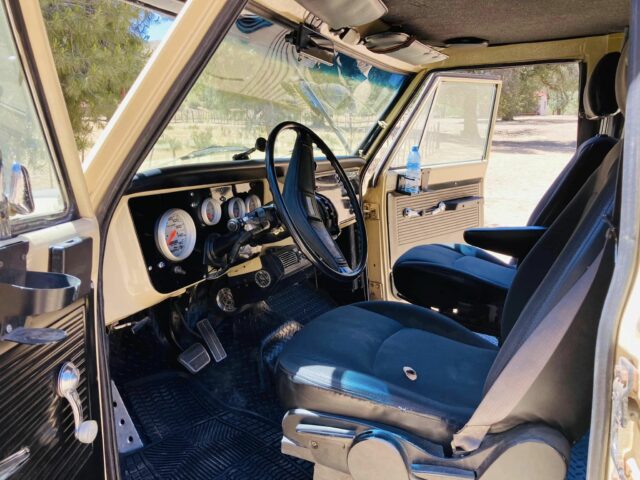

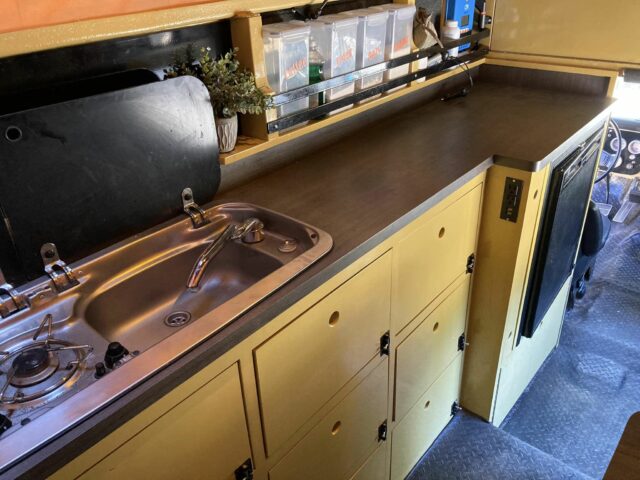

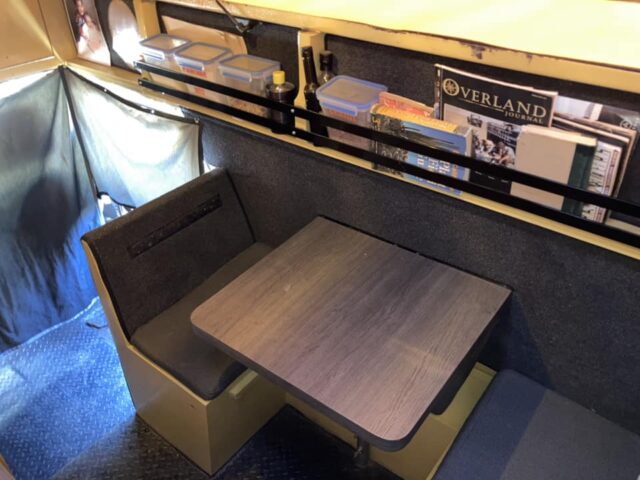
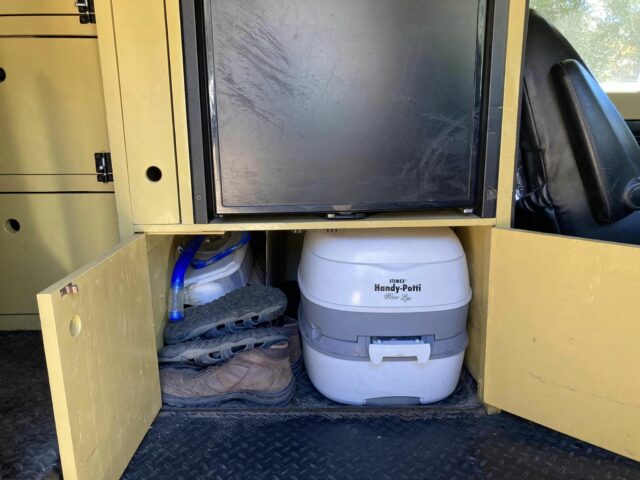
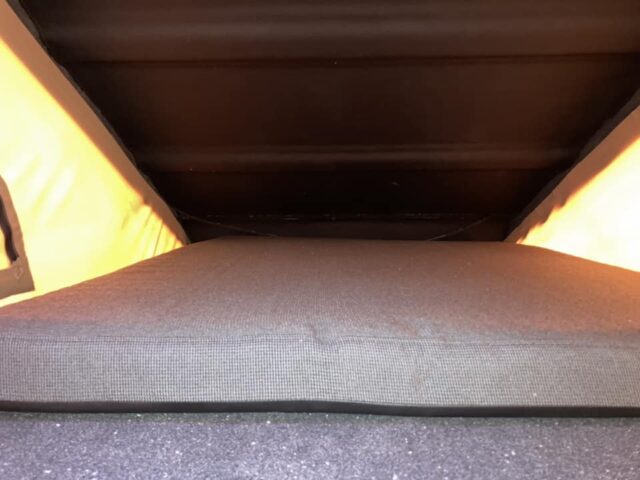
The rear windows were replaced with sheet metal, allowing the interior to be built to its full potential while the camper’s interior is accessed through the right rear passenger door. Inside, the space is well utilized and minimalist, with sleeping for two in the pop top, ample storage cupboards, a small dining area, and a kitchen area. The interior color scheme mirrors the vehicle’s exterior. A portable toilet is nestled in a cupboard beneath the Dometic fridge, with modern amenities such as an MMPT solar charger and a heating system, making this a camper well-equipped for any adventure. As the camper is built on the ’69 Suburban station wagon platform, there is a generous walk-through from the camper to the driver’s seat, a feature many consider essential for long-term, long-distance exploration.
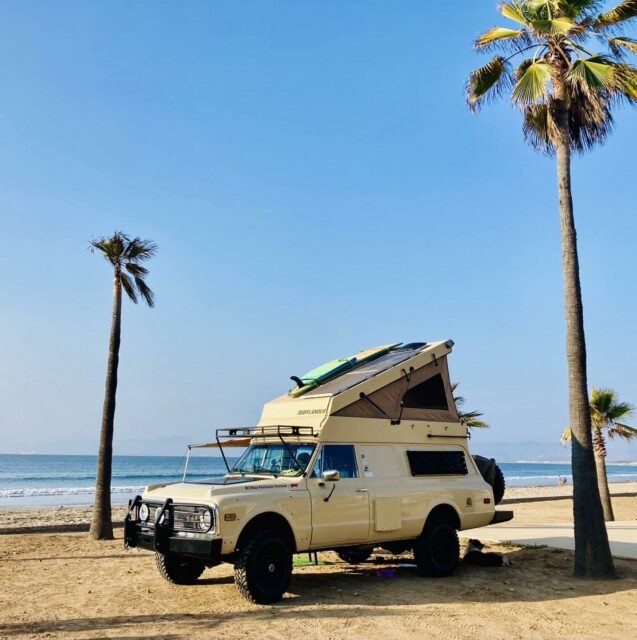
The SubyLander’s journeys post-renovation have been nothing short of incredible. From traversing mainland Mexico to exploring the coastline of Colima (a small state of western Mexico on the central Pacific coast), the vehicle proved its mettle. This family’s journey isn’t just about a vehicle; it’s about a family’s legacy of adventure. Raul’s daughter owns a Tundra with a pop-up, and his son has an FJ62 Land Cruiser camper. Together, they travel like modern-day nomads, united by their shared love for exploration and the great outdoors. Unfortunately, Raul and Caroline have not yet been able to make that dream journey to Patagonia a reality—life happens while you make other plans.
But, when they are ready, the vehicle is ready to take them, and we have no doubt that they will turn heads and inspire people as they travel with their beloved old Chevy.
Specifications
1969 Chevy “SubyLander” Suburban camper
Power
Chevy 340 V8 engine with a 2-barrel Rochester carburetor
Suspension and Drive
- Chevy Turbo 350 transfer case (NP 205)
- Bilstein shock absorbers
Wheels and Tires
- GM stock heavy-duty steel rims
- BFGoodrich KM3
Recovery and Armor
- Warn 13,000-pound winch
- Front and rear steel bumpers
- MaxTrax recovery boards
Accessories
- Padmur Fabrication visor rack, custom dash and bumper
- Dometic fridge
- Two-burner propane stove
- Stimex portable toilet
- Dometic Planar diesel heater
- Front bumper-mounted bike rack
Facebook: bajarancholabellota
Read More: The Versatile Freedom Mog 2.0 Overland Camper Gives Us the Fizz
Our No Compromise Clause: We do not accept advertorial content or allow advertising to influence our coverage, and our contributors are guaranteed editorial independence. Overland International may earn a small commission from affiliate links included in this article. We appreciate your support.


